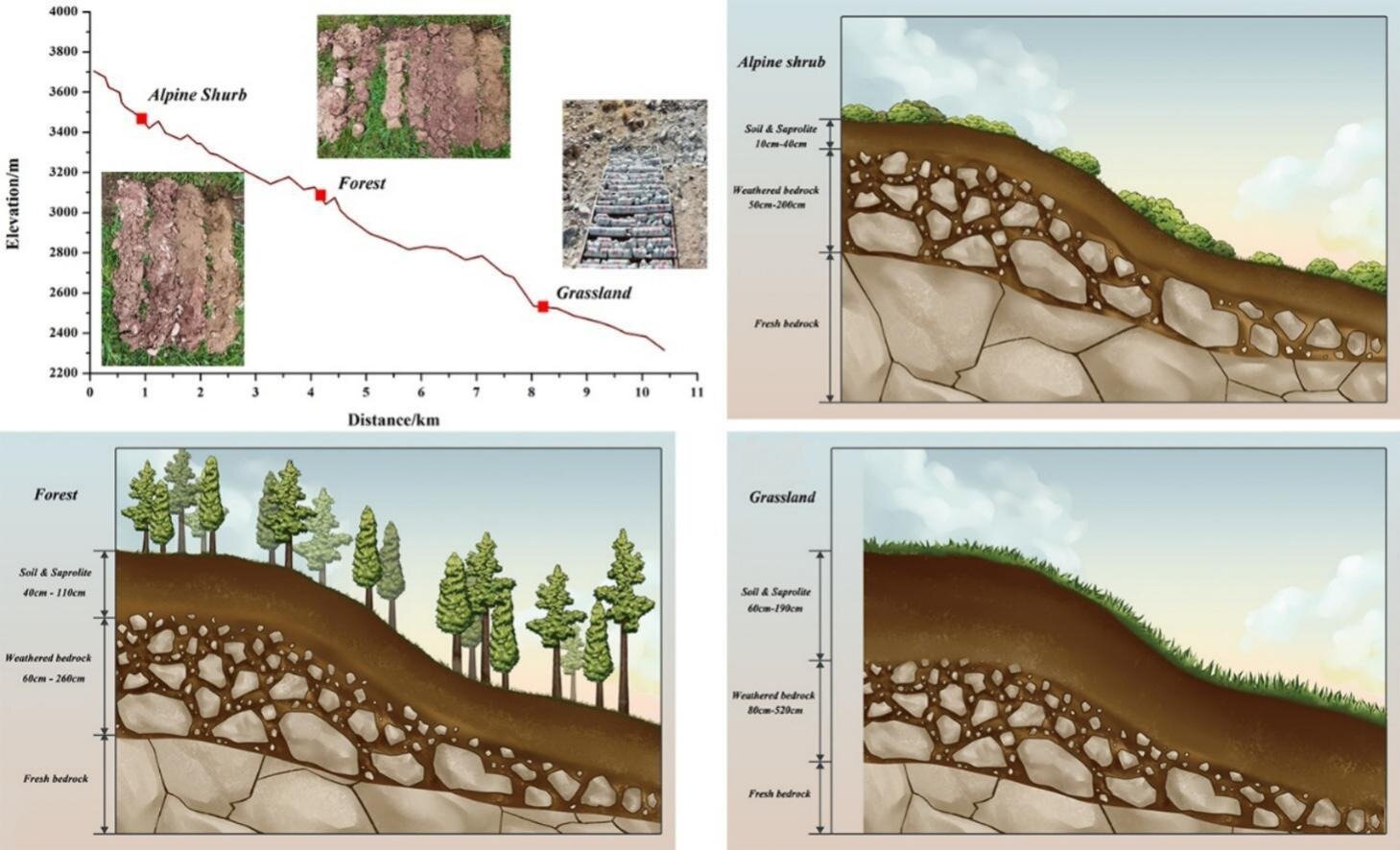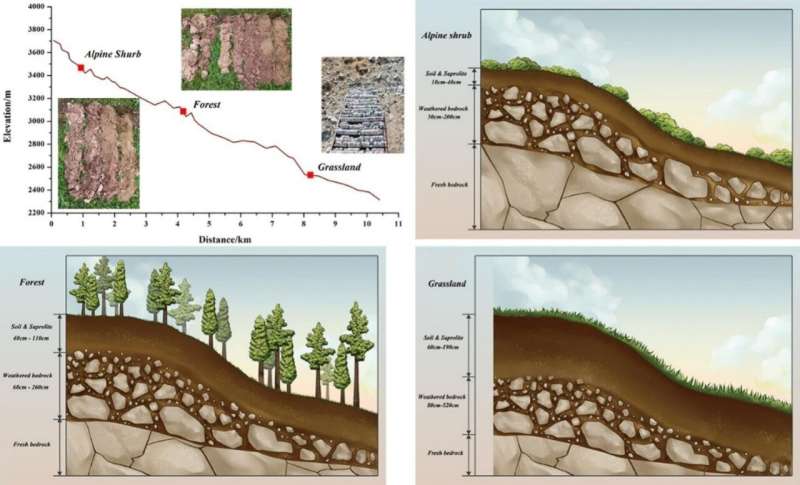

The water storage capacity of weathered bedrock is 4.7 times higher than that of soil, which should be taken into account in ecohydrological cycle observation and simulation studies.
Prof. He Zhibin’s research teams from the Northwest Institute of Eco-Environment and Resources of the Chinese Academy of Sciences conducted an exploratory study on the structure and ecohydrological functions of weathered bedrock in the Qilian Mountains. They selected 34 sample sites to analyze the characteristics of soil and weathered bedrock profiles in the Qilian Mountains.
Their study, titled “Modulation of evapotranspiration and stream runoff by weathered bedrock in arid and semi-arid mountains,” is published in Science of the Total Environment.
The researchers examined the changes in the structure and water storage capacity of weathered bedrock in different landscape units, confirming its role in regulating runoff and plant water use.
They found that the soil-weathered bedrock was thicker on the southern slope and shallower on the northern slope, with a higher proportion of exposed rock surfaces.
The variation in weathered bedrock regionally affects streamflow production and water storage. Alpine shrubs and forests contribute primarily to subsurface runoff, while grasslands contribute mainly to surface runoff.
Approximately 25–33% of the annual evapotranspiration in alpine shrub and forest regions comes from water stored in weathered bedrock layers that are replenished during winter and used by trees during summer and autumn.
In wet years, the saturated weathered bedrock facilitates runoff generation through direct storage processes. Conversely, during dry years, the weathered bedrock is depleted of water, resulting in indirect storage processes that do not contribute to runoff generation.
The study proposes a framework for understanding water storage dynamics in weathered bedrock within the ecohydrological cycle of arid and semi-arid mountains, highlighting its importance and the need to include it in observations and simulations.
More information:
Pengfei Lin et al, Modulation of evapotranspiration and stream runoff by weathered bedrock in arid and semi-arid mountains, Science of The Total Environment (2024). DOI: 10.1016/j.scitotenv.2024.172847
Provided by
Chinese Academy of Sciences
Citation:
How water storage in weathered bedrock impacts evapotranspiration and stream runoff (2024, May 31)
retrieved 31 May 2024
from https://phys.org/news/2024-05-storage-weathered-bedrock-impacts-evapotranspiration.html
This document is subject to copyright. Apart from any fair dealing for the purpose of private study or research, no
part may be reproduced without the written permission. The content is provided for information purposes only.

